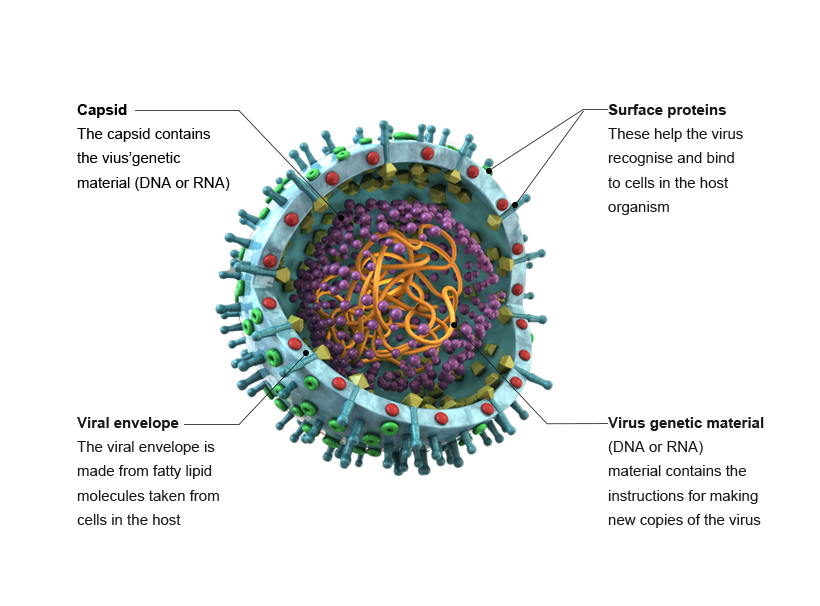The biggest danger to our species lies not with bullets or toxins, it has to do with things you cannot even see! It is virus that has killed millions of people. The 1918 Spanish flu have caused up to 50 million deaths worldwide. The flu virus can kill vulnerable people every winter. HIV is also a virus and can cause AIDS. However, not all viruses are harmful; bacteriophages are actually useful because they kill bacteria.
The discovery of virus
In 1892, a pathogen that could be passed through bacteria-retaining filters was first discovered by Russian botanist D.J. Iwanowski in an infected tobacco plant. Martinus Beijerinck confirmed Ivanovsky's experiments six years later and first coined the word 'virus' to describe this new agent of disease. W.M. Stanley isolated crystal of Tobacco Mosaic Viruses in 1935. The use of electron microscope finally proved that the virus was indeed an actual entity.
What is a virus?
Viruses are the most common biological unit on Earth. A virus is an extremely small agent that can infect all types of life forms, from animals and plants to microorganisms. The diameters of different viruses are essentially a range of about 20-400 nanometers in diameter. An average virus is bigger than a ribosome, whereas the average bacteria are bigger than an average virus. Mimi viruses are the biggest known viruses with size up to 400 nanometers. Circoviruses are the smallest known viruses with size up to 20 nanometers. An electron microscope is needed because viruses are so small.
The discovery of virus
In 1892, a pathogen that could be passed through bacteria-retaining filters was first discovered by Russian botanist D.J. Iwanowski in an infected tobacco plant. Martinus Beijerinck confirmed Ivanovsky's experiments six years later and first coined the word 'virus' to describe this new agent of disease. W.M. Stanley isolated crystal of Tobacco Mosaic Viruses in 1935. The use of electron microscope finally proved that the virus was indeed an actual entity.
What is a virus?
Viruses are the most common biological unit on Earth. A virus is an extremely small agent that can infect all types of life forms, from animals and plants to microorganisms. The diameters of different viruses are essentially a range of about 20-400 nanometers in diameter. An average virus is bigger than a ribosome, whereas the average bacteria are bigger than an average virus. Mimi viruses are the biggest known viruses with size up to 400 nanometers. Circoviruses are the smallest known viruses with size up to 20 nanometers. An electron microscope is needed because viruses are so small.

Virus structure
Every virus is composed of a core of RNA or DNA, generally surrounded by an outermost protective protein coat called the capsid. The proteins for the capsid are encoded by the nucleic acids that are housed within the capsid itself. All viruses contain deoxyribonucleic acid (DNA) or ribonucleic acid (RNA) as their genome, and this determines if they are DNA viruses or RNA viruses. Though viruses can be spread, they lack the ability of self-reproduction and can not replicate without the help of a host cell. In some cases, the viral capsid may also be surrounded by a viral envelope, which is a lipid bilayer derived from the host cell. This envelope can change rapidly in response to many different factors and allows the virus to avoid your immune system if necessary.Mystery still surrounds the origins of most modern viruses; ways to cure the diseases the viruses cause are still in the very early stages of development. Elabscience has a wide range of ELISA kits and antibodies for the study associated with viruses.



